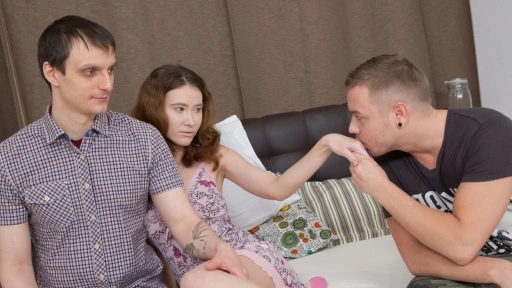Embarking on the cuckold therapy journey can be a transformative step for couples seeking to deepen emotional intimacy, enhance trust, and reignite passion in their relationship. However, as with any significant change in relational structure, it comes with challenges.
Over the years, my clinical work and personal experience have shown that the success of cuckold therapy often hinges not just on desire or curiosity, but on how couples begin the process. Early missteps can lead to unnecessary emotional strain, while thoughtful preparation fosters lasting connection.
Here are the five most common mistakes couples make when starting cuckold therapy—and the evidence-based strategies to avoid them.
1. Rushing Into Real-Life Experiences Without Emotional Groundwork
It’s natural for couples to feel excited when they first discover the potential of cuckold dynamics. Many feel a renewed spark and are eager to act on it. However, jumping straight into experiences without building emotional and psychological readiness is one of the most common mistakes I see in my practice.
Couples often enter this dynamic inspired by erotic stories, pornography, or anecdotal accounts. While these sources can ignite arousal and intrigue, they do little to prepare partners for the emotional complexity that emerges when fantasy becomes reality.
In many cases, the husband might insist he is ready, only to feel unexpectedly insecure, jealous, or distant afterward. Similarly, wives may carry guilt, confusion, or internalized cultural shame even after a consensual and well-planned encounter.
Clinical Insight
Successful couples begin with emotional groundwork, including:
- Open, honest communication about boundaries, fears, and desires.
- Reflective exercises to explore emotional readiness and vulnerability.
- Collaborative discussions on what scenarios are acceptable and what are off-limits.
Therapeutic exercises such as journaling, structured dialogues, or scenario exploration can provide emotional clarity and reduce reactivity when the dynamic becomes real.
Avoidance Tip: Schedule multiple deep conversations before any in-person exploration. Discuss your fears, fantasies, and worst-case scenarios openly. The more emotionally prepared you are, the less likely your foundation will crack under pressure.
2. Failing to Define Roles and Boundaries Clearly
Cuckolding thrives within clearly defined roles, expectations, and rules of engagement. Without structure, couples often experience emotional turbulence and confusion that can undermine trust.
Many couples assume they are on the same page, only to realize later that their definitions of participation, dominance, or emotional involvement differ significantly. For example, a husband might see himself as an observer, while the wife may expect him to take on a submissive role. Or one partner may assume emotional monogamy is implied, while the other begins forming attachments to a third party.
Why This Happens
- Communication is often driven by arousal, not clarity.
- Couples may assume unspoken expectations will naturally align.
Clinical Insight
In therapy, we work to make the implicit explicit. I guide couples through role exploration using tools like:
- Identity mapping (e.g., cuckold, cuckoldress, hotwife, bull).
- Emotional needs clarification.
- Boundaries worksheets that address physical, emotional, and social dimensions.
These tools help uncover latent expectations and ensure both partners are fully informed and aligned.
Avoidance Tip: Don’t just talk about what you want to do. Talk about what you don’t want. Talk about what would hurt, what would surprise you, and what you’d need to feel secure. Clarity prevents crisis.
3. Overlooking the Psychological Impact of Post-Experience Emotions
Even couples with solid communication and excitement can be caught off guard by the emotional residue of a cuckold experience. It’s common for feelings of guilt, shame, or unexpected jealousy to emerge—especially for the husband.
What I often observe is that many husbands misjudge their emotional resilience. They feel confident and aroused beforehand, but once the encounter ends, they experience a psychological comedown. This is commonly linked to a neurochemical phenomenon known as post-nut clarity, where the hormonal high of arousal is followed by a surge of reflective doubt and detachment.
Scientific Perspective
- After orgasm, dopamine and oxytocin levels drop while prolactin spikes, shifting the male brain from erotic engagement to introspective processing.
- This can cause a stark emotional contrast: what once felt thrilling suddenly feels threatening or disorienting.
Clinical Insight
Rather than pathologizing these reactions, I help clients understand them as part of the process. Post-experience vulnerability is not failure—it is information. It signals the need for reassurance, dialogue, and emotional attunement.
Avoidance Tip: Build in post-experience rituals. Cuddle, talk, debrief, and check in with each other. Treat the emotional aftermath with as much intention as the experience itself.
4. Treating Cuckold Therapy Solely as a Sexual Adventure
It’s easy to view cuckold therapy as a way to spice things up—and while it certainly can reignite erotic energy, reducing the dynamic to sex alone misses its deeper therapeutic potential.
Cuckolding, when explored with care, becomes a vehicle for trust-building, power exchange, self-awareness, and emotional reinvention. It offers a framework to challenge inherited ideas of ownership, gender roles, and relationship norms.
Why This Happens
- The most visible depictions of cuckolding are erotic, explicit, and one-dimensional.
- Couples may believe the dynamic “works” only if it mimics pornographic scenarios.
Clinical Insight
The most rewarding cuckold journeys are those in which couples explore why the dynamic matters to them emotionally. Is it about empowerment? Letting go of control? Receiving validation? Exploring submission?
In therapy, we explore:
- Emotional drivers beneath arousal.
- How power dynamics influence relationship health.
- How cuckolding can repair emotional wounds through transparency and intentional vulnerability.
Avoidance Tip: Balance erotic excitement with emotional inquiry. Ask yourselves not just what turns you on, but why. Understanding the emotional root deepens the experience and strengthens the connection.
5. Ignoring the Importance of Ongoing Support and Adaptation
One of the greatest myths in cuckold therapy is that once you find what works, it will always work. In reality, relationship dynamics are fluid, and the cuckold framework must evolve alongside emotional growth, life changes, and new desires.
What worked in the early stages may no longer serve the couple months or years later. Needs shift. Emotional capacities expand. Power balances fluctuate.
Why This Happens
- Initial success creates a false sense of permanence.
- Couples may avoid change out of fear that adjusting the dynamic will cause disruption.
Clinical Insight
The healthiest couples I work with maintain regular check-ins—either with each other or with a therapist. They view the dynamic as living, not fixed. They adapt boundaries, adjust roles, and remain open to evolution.
Ongoing support also helps navigate new territory: emotional attachment to a bull, changes in sexual frequency, life stressors, or evolving identity. Each of these can impact the dynamic and deserves thoughtful attention.
Avoidance Tip: Normalize reflection. Revisit your agreements. Debrief after every major shift. Therapy isn’t just for crises; it’s a proactive tool for sustained growth.
Starting With Clarity, Building With Trust
Cuckold therapy isn’t a quick fix or a one-time thrill. It’s a layered, often profound journey that allows couples to reconnect, rebuild, and rediscover each other through new lenses. But like any transformation, it works best when built on trust, structure, and emotional honesty.
The early stages of exploration can be the most vulnerable. But with the right foundation—emotional clarity, defined roles, supportive structure, and ongoing reflection—cuckold therapy becomes not just a kink, but a pathway to deeper intimacy.



